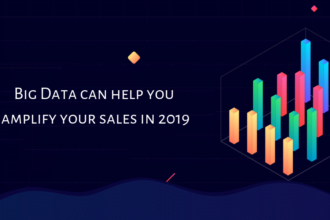I recently came across an interesting post from Big Data Beard, which was published in March. This post talked about the growing importance of big data in facilitating virtual meetings. As they pointed out, big data technology has been a crucial lifeline for countless organizations, especially during the COVID-19 crisis.
DataFloq writer Courtney Myers has talked about this in the past as well. She said that big data is the backbone of VoIP technology.
If you are running meetings online, then you need to know how to use big data to use it effectively. You will be surprised by how beneficial big data can be in fostering more effective meetings.
The Role of Big Data in Online Meetings in 2020
Online meeting are changing the way businesses host conference calls, sales meetings, and more. No longer are workers required to sit in a stuffy room with no A/C to discuss last month’s policy changes. Let’s be honest; this isn’t ideal for anyone, and you’ve probably grown to loathe company meetings for this reason.
These advances wouldn’t be possible without big data. Hosting online meetings with data-driven technology like VoIP solutions allows everyone to attend from anywhere in the world, in the comfort of their home or the familiarity of their office cubicle. This level of flexibility makes for better meetings, and with so many online conferencing options available, there’s no lack of options to fit your business needs.
Hosting an online meeting is much like hosting an in-person meeting, but with a few extra steps to account for the tech you’ll be using. Here’s our guide on hosting an online meeting with ease.
Recognize Your Data Needs
Every online meeting is going to consume data. The question is how much data you will need.
Julie Bai from Nextiva has a blog post on this topic. They point out that you need to understand the data caps, which usually range from 150 GB to 1,024 GB. You need to know how many participants you have and what types of media you will be streaming to anticipate your data requirements.
Use An Agenda
As with any meeting, an agenda is nothing less than a requirement. Big data might have provided the technology to make these meetings possible, but it doesn’t guarantee success if you aren’t organized. Imagine planning a road trip with no map! Ok, so maybe a map-less road trip might be exciting with its spontaneity, but I can assure you that a meeting is not exciting when it spirals out of control; especially if you’re the host.
An agenda will help you plan and polish everything from the meeting’s goals to when and where it will take place to who will attend. A meeting agenda is easy to create. You don’t need a fancy meeting template (though they make for a much better presentation for the attendees) or specific graphics to make it look pretty. In fact, an agenda can just be a hand-written list or an email.
The important part of creating an agenda is sharing it with the callers beforehand. You should share an agenda at least a few days ahead of time to make sure everyone is up to speed. When you host an online meeting, an agenda is twice as important considering most people will be in a comfortable environment and can, therefore, be easily distracted. Your agenda will keep the meeting on track and keep everyone focused.
So, how can big data help? You can use data analytics from previous meetings to see which types of formats proved to be most effective. You can determine this through engagement metrics and performance milestones from various meeting formats.
Trim Your Guest List
When you draft your initial guest list, let it sit for a while and come back to it. Look it over once more and ask yourself some important questions about the people on it.
- Does this person have direct information or experience to the subject matter?
- Does this person have a reputation for being talkative/getting off-topic?
- Does this person have any specialized experience that could help solve a problem or reach the goal of the meeting?
- Would an email be sufficient to bring this person up to speed with the meeting’s results?
The fact is, not everyone you think needs to attend the meeting actually needs to. Ask yourself these four questions and trim your guest list accordingly. The more people that attend your meeting, the more likely it is to experience derailment or spiral completely out of control.
Meeting hosts often make the mistake of inviting people that don’t even need to be there, which makes those attendees bored. When someone is bored, they’re much more likely to become a nuisance or a distraction to everyone else.
How can big data help with this? You can use data mining tools to find more experts and encourage them to participate.
Keep It Short And Sweet
No matter how much you and your team members love your jobs, it’s pretty much a given that not one of you wants to sit in a meeting for over an hour. Even the most productive meetings can quickly become exhausting once they pass the one-hour mark, and people will begin to lose focus after about sixty minutes.
Keep your meetings short and to the point. If you feel the meeting will surpass the one-hour mark, at least allow some form of break or intermission just before the hour hits. Allow everyone to stretch and refocus so you can conclude the meeting an achieve the desired goal without tiring everyone out.
Use A High-Quality Platform
While there might be hundreds of online meeting platforms, they are not created equal. Some offer video chatting along with audio options, some offer operator-assisted calls, and some only host audio calls. Whichever platform you choose, it’s important to consider the quality of the service and the company providing it before you pay for it.
You’ll want crystal-clear audio and/or video, of course, but what matters more is consistency. Even if you get HD-quality video and audio, if it only works half the time, you’re wasting your money.
Set Clear Expectations and Goals
Along with your agenda, you’ll need to create some expectations and goals for your meeting. What do you expect from each participant? What goal do you want to achieve before the end of the meeting?
Once you’ve figured these out, you’ll want to share them with the meeting’s participants at the beginning of the call. Set clear expectations and be certain everyone understands the ultimate goal of the meeting for maximum productivity.
Troubleshoot Mic and Camera Beforehand
Have you ever been in an online meeting with someone who’s having trouble with their mic or camera? It can be a distraction to everyone in the meeting, not mention frustrating. Some useful advice: troubleshoot beforehand. You can easily troubleshoot a mic and camera before the meeting starts. In fact, most online meeting services will allow a mic/camera check before you even join the call or meeting!
Big Data is the Key to Creating Successful Virtual Meetings
Virtual meetings are becoming more important than ever, especially during the pandemic. Fortunately, big data technology can help make sure they go as seamlessly as possible.











